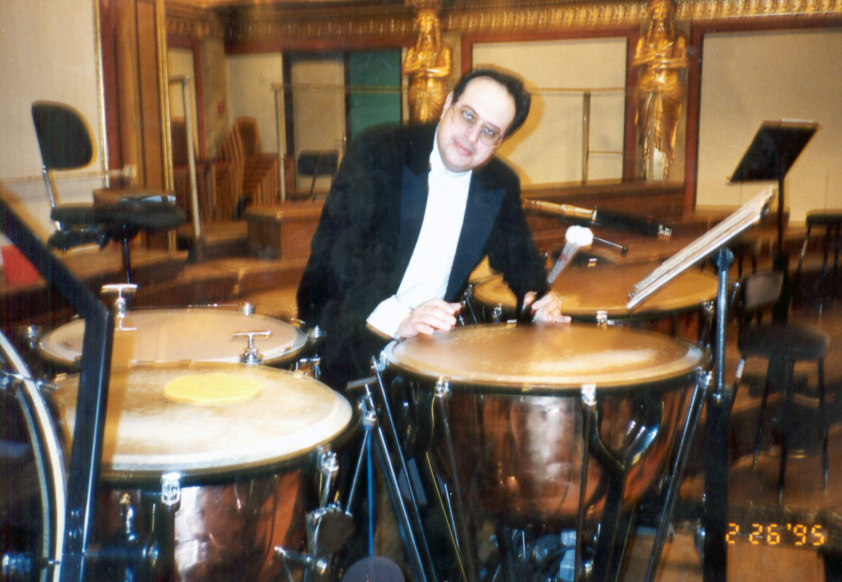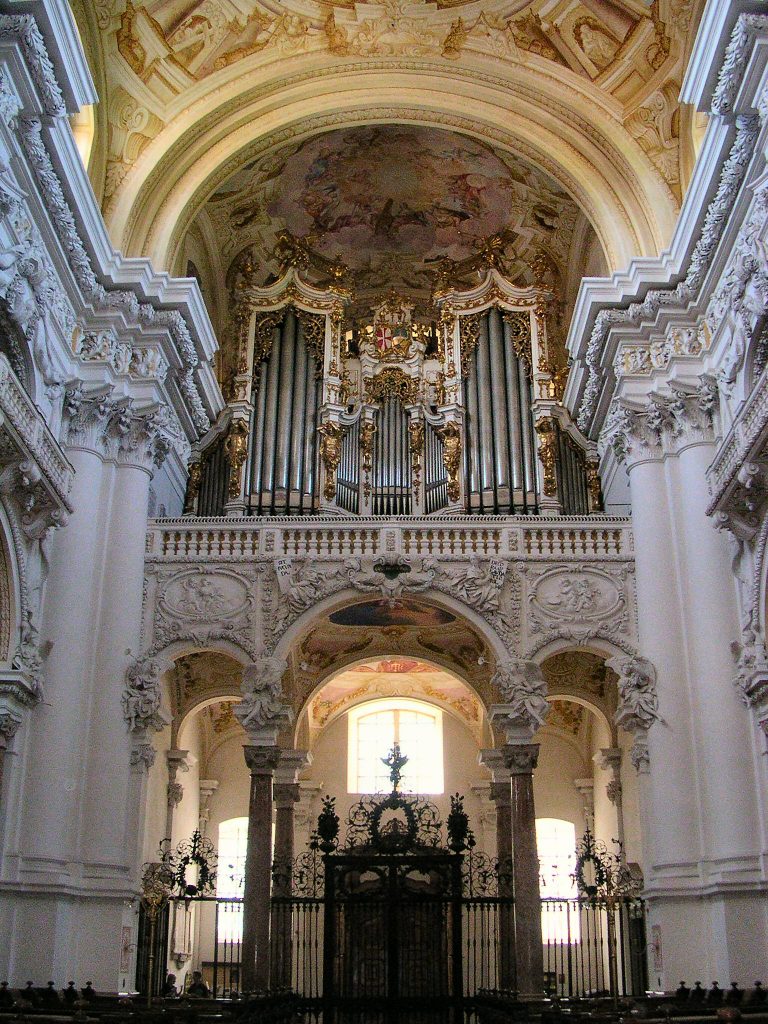The Year 1995 – Part One

It has been some time since I finished the previous post in this series which dealt with the events of the last part of 1994. That was a very busy period for both the orchestra and myself musically – two recording sessions, several tours and the orchestra’s seventy-fifth anniversary celebrations and performances. To be honest, I had some help in remembering much of that period in detail. I kept (and still do) a journal and I was particularly good to write in the journal fairly frequently during that period. Not so much for 1995. I am afraid that I’ll be relying a lot on memory for this blog post, and I have to admit that I may get a lot of the details wrong. Having said that, here goes.
When I returned to Oslo with my daughter after the United States tour of late 1994, the year 1995 seemed at first like any other year. There were some tours scheduled and some fine concert programs. There was only one EMI recording planned for that year and that it took place in October. The remaining two parts of Ottorino Respighi’s Roman Trilogy – Pini di Roma and Fontane di Roma – were recorded at that time. I have already commented on this in Part Seven of my personal reassessment of the Jansons/OPO/EMI recordings.
With regards to the timpani, it was an interesting season. My cable drums plus the orchestra’s 23 inch cable drum made the trip across the pond after our USA tour, and I spent much of 1995 putting them to use. I wrote about how I purchased these instruments and convinced the management to purchase the 23 inch drum in the previous installment of this series. I was very eager to use them during the upcoming season. They had worked very well on tour, and I was sure that they would work well. As it turned out, I used them quite a bit. I usually used them as as set – with the Light Continental Chain 31 inch on the bottom, and the 23 inch Stotz-Anheier for the top drum. It was this setup that I used during the 1994 US tour with great success. The next opportunity to use them in this setup occurred in March of 1995. Hans Vonk was the conductor and Eileen Siegel was the violin soloist for Barber’s Violin Concerto, which opened the program. The concluding work was Bruckner’s Sixth Symphony. I had played the Bruckner before, and loved the piece (it still is one of my favorite works.) But I had not encountered the Barber concerto before and fell in love with the music. It has a very nice timpani part, and there is a small part for snare drum in the last movement, and not occurring at the same time as the timpani part. This allowed me to play the part myself and earn a doubling fee. The timpani part, while not difficult, could be a little tricky on cable drums, but by this time, I was used to them and all went well. Having said that, the part still kept me on my game. I was going to say “on my toes”, but since I was using cable drums, that would not have been strictly accurate. The Bruckner was no sweat and I confess that I really enjoyed those two concerts. I also used the drums as auxiliaries that year – usually with the 25 inch Leedy-Anheier replacing the 23 inch in order to give greater depth when the lower edge of the top drum range was being used. (See the image at the top of this post.)
There was a lot going on in 1995 – in addition to an important tour to Germany, Switzerland and Austria in January and February; there was another festival tour in the late summer of 1995, plus, if memory serves, a quick trip to Harstad, Norway to play a concert at the Festival there. I believe that the festival is now called Festpill i Norge. This may have been part of the inaugural season of the festival, and Marc Soustrot conducted the concert. There was only one recording session for EMI, and that was for the remaining two parts of Respighi’s Roman Trilogy, which I have discussed previously in a separate blog post. Personally, Joy and I and the girls spent most of the summer in the United States, visiting family and just enjoying ourselves and getting re-energized for the second half of 1995.
Spring 1995
Let me start by attempting to recount the events of the spring portion of 1995. Note: when I say spring, I am and Debussy: La Mer referring to the months January to June. The summer and fall portions refer to August through December. In looking over what pictures I took during this period, I can sketch out a pretty good picture of what I did musically with the orchestra during the spring of 1995. I mentioned an important spring tour to Germany, Switzerland, and Austria. It was more than just that. We took some heavy-duty repertoire on tour – Mahler: Symphony No. 7; Stravinsky: Symphony of Psalms; R. Strauss: Also Sprach Zarathusthra and Debussy’s La Mer among other works. If memory serves, this was quite a busy tour. Among the cities we visited were Cologne, Germany; Zurich, Switzerland, and (always a high point of these tours) Vienna, Austria. We also played a concert in Linz, Austria at the Brucknerhaus. I remember that visit because I made a trip out to the Stift. St Florian, where Anton Bruckner was organist for several years and lived there during his tenure. He is entombed just below his beloved organ in the church there.
The church is part of the monastery of St. Florian, which is located a few miles outside of Linz. If memory serves me, I went out there by tram. It is a beautiful building, and most impressive. I would loved to have heard the organ live during my visit, but sadly they were making some repairs to the church (mainly in the altar area) so it was quiet that day. (Note: the Bruckner organ can be heard on Georg Solti’s recording of Mahler’s Eight Symphony on Decca. Although the recording was made in Vienna’s Sofienssal during a CSO tour of Europe, the organ used was the Bruckner organ of St. Florian, and it was dubbed in. It makes a glorious sound- listen to the link below!)
The concerts themselves all went well. The highlight of the tour for me, other than the visit to the monastery of St. Florian outside of Linz was the pair of concerts we played in Vienna at the beautiful Goldnersaal of the Musikverien. If memory serves me correctly, the first concert was devoted to Richard Strauss’ Also Sprach Zarathusthra and Stravinsky’s Symphony of Psalms, and I believe, Debussy’s La Mer. The second concert was devoted to Mahler’s Seventh Symphony. It was always a treat for us to perform at the Musikverein, as the acoustics are incredibly good. It is easy to play in, and one can hear each section of the orchestra without a problem, which certainly helps ensemble. This is in strong contrast to the acoustically challenged Konserthus back in Oslo. When we played the Stravinsky back in Oslo prior to the tour, we used the Oslo Philharmonic Choir, and they acquitted themselves quite well. In Vienna, we partnered up with the Wiener Singverien – the well-known chorus associated with the Musikverien. This was the first of two occasions that we worked with them, the second occasion coming during our blockbuster Musikverien residency in the fall of 1997. The Stravinsky came off quite well, as did the Strauss and Debussy. For me, the high point was the performance of Mahler’s Symphony No. 7, which if I am not mistaken closed out the tour. I had the Hingers (with calfskin) and the 23 inch Stotz-Anheier for this tour – I used the cable drum in both the Stravinsky and the Mahler. It was equipped at that time with a clear Remo head, which actually sounded quite good. I was taking a bit of a chance with calfskin on tour – actually, I had been doing that for quite some time – witness Mahler One in 1993 in Japan – but I had things in hand and all went well. Before one knew it, the tour was over and we were back in Oslo and continuing with our regular season.
Rachmaninov with Andsnes and Berglund
Shortly after arriving back in Oslo, Leif Ove Andsnes performed Rachmaninov’s Piano Concerto No. 3 with the orchestra, under the direction of Paavo Berglund – who was one of the orchestra’s favorite guest conductors. We actually did three concerts instead of two, as this was to be a “live recording” of the Rachmaninov concerto. The concluding work was the Sibelius Second Symphony. While the Rachmanonov came out well, I wish we could have recorded the Sibelius with Berglund, who in my opinion was one of the supreme interpreters of Sibelius. The concerts were fun to play, and I used the “John Wyre” Hingers with the Light Continental chain for the concerts and the brush up-recording session on the Saturday morning after the concerts. It was an enjoyable experience, and the concerto was later released on the Virgin label.
Below is a link to the first movement of the concerto. This dates from March 1992.
To Harstad
Just before the spring season closed with the usual Holmenkollen concert (which was conducted by Marc Soustrot), the orchestra was invited to give a concert in Harstad, in Northern Norway. This was part of the introductory season of what was the Harstad Music Festival. The funny thing about this tour is that it was not something that was long planned, but suddenly appeared on the orchestra’s schedule, which was unusual. However it came about, we were able to get a conductor hired (Marc Soustrot – since he was engaged to do the Holmenkollen concert), a program put together, and soon we were up in Harstad preparing for the concert. I had played in Northern Norway once before, back in 1986, but this was my first time in Harstad. The program featured Berlioz’ Symphonie Fantastique as the main work on the progam. We took all of the cable drums and the Light chain drum, plus the Light Met Bs for my assistant. The concert went off very well. The things I remember most from that concert visit is the fact that since it was early June, it was daylight until well past midnight, and having sampled whale meat stew at a dinner after the concert. I found it delicious. At that point in my life, I ate pretty much what was in front of me- that, and the fact that it never really got dark. We were way north of Oslo, and Norway is the “Land of the Midnight Sun”. It was overcast the day were in Harstad, but it was still light enough to enjoy ourselves. As a matter of fact, the dinner we had took place at about 10:30 pm local time. We didn’t get out of the restaurant until after midnight. It was fun. As this blog post is getting to be longer than I expected, and as more events of 1995 come into focus, I’ll save the rest of 1995 for the next post! Enjoy!


Recent Comments